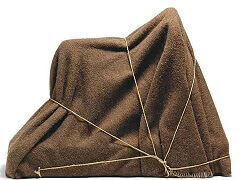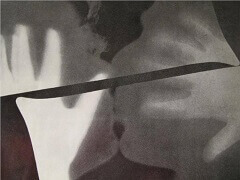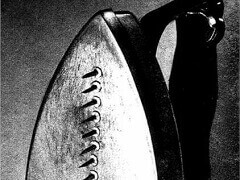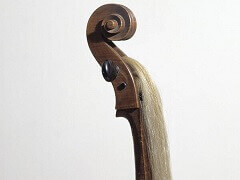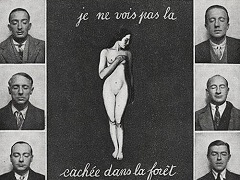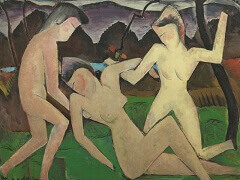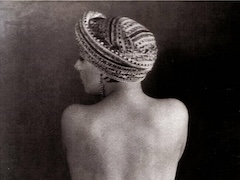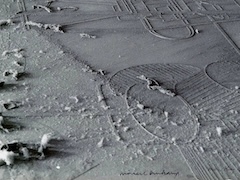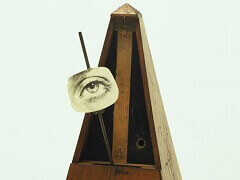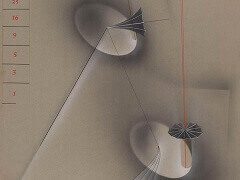Observatory Time: The Lovers, 1936 by Man Ray
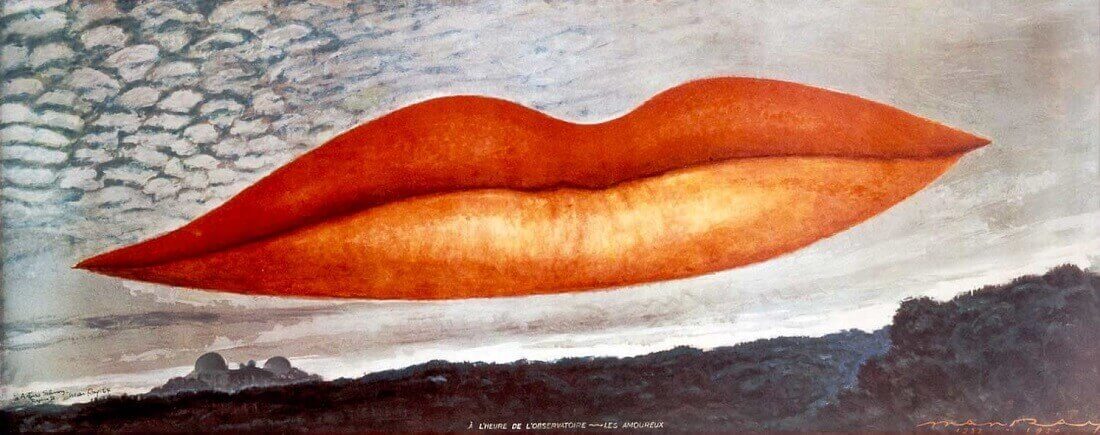
Observatory Time - The Lovers, or as it has become more familiarly known, The Lips, has been described as the quintessential Surrealist painting, a supreme example of isomorphism, the use of organic forms oddly and obliquely referring to man, in a kind of fastidious, realistic illusionism - the unifying theme in mainstream Surrealist art in the heyday of the 1930s. Its title exemplifies Gertrude Steins insistence up9on embodying "time in the composition". The canvas was eight feet long and over three feet high, and it took Man Ray two years of meticulous, daily work to get it right.
The Lips relied on a reference central to Surrealist philosophy, the devouring woman. It was the latest in a distinct series of big paintings, stretching back to MCMXIV of the Ridgefield period and The Rope Dancer and anticipating by a half dozen years Le beau temps. Every time Man Ray reached for the dramatic, grand statement in his paintings, he succeeded. The bigger canvases forced him into deliberateness of gesture and drew him away from the slapdash approach that ultimately (permanently, some critics would say) undermined his reputation as a painter.
Man Ray's complete absorption in the task of painting The Lips also enabled him to forget his deepening hatred of photography and to escape into the preferred "high and exacting plane of Surrealist activity." Surely it is no accident that Lee's lips in the painting are flying through the air - reveling in sublime height, set in a faint smile, redder than any lipstick-reddened lips could possibly be. Indeed, the color of The Lips is as emancipated as its subject: the woman gone, the woman flown.
It is not known whether Man Ray was also recalling the evil lips of Maldoror, the "sapphire lips" of Lautreamont's poem, that satanically lyric work that had made such an enduring impression upon him in his American Dada period. The monumental painting is - like Lautreamont's poem - truly startling in its impact. Once again, as he had done so often in his photographs, making him the darling of the Surrealist writers, Man Ray set out to reinvent the female anatomy, in much the same manner as one of his earliest exemplars, Ingres. He wanted to prove himself with The Lips, to demonstrate that he could take on a vast terrain and keep control of it. The work figurative, yet mystifying.


